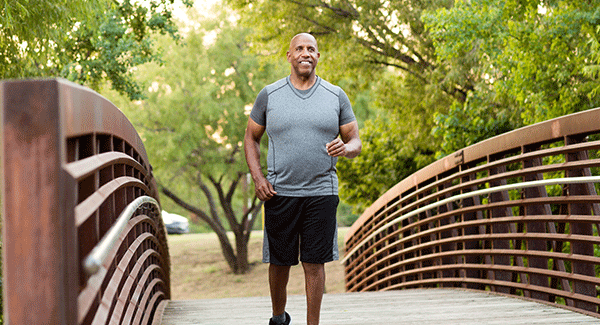The Emotion–Pain Connection
Learn to break the cycle of chronic pain and negative emotions.
Although it may feel like it’s coming from your joints, pain – particularly the chronic pain common to arthritis – is also an expression of your state of mind. If you’re depressed or anxious, you’ll very likely hurt more than when your mood is lighter or more balanced.
Chronic pain and emotions are so intertwined, in fact, says psychiatrist and palliative medicine physician David Buxton, MD, that’s it’s often hard to tell where one ends and the other begins. People with depression, for example, have about three times the risk of those without it of developing chronic pain. And, those with chronic pain have about the same increase in risk for winding up with clinical depression.
Depression and anxiety can intensify feelings, including pain, hopelessness and sadness, says Dr. Buxton, clinical assistant professor of medicine at Virginia Commonwealth University and director of the private Center for Palliative Psychiatry, both in Richmond. “Mentally, emotionally and physically, everything sensory, including pain, ratchets up.”
Multiple studies of osteoarthritis, rheumatoid arthritis, lupus and fibromyalgia show that people who experience more negative emotions also report more pain. Not surprisingly, people with these conditions also have substantially higher rates of depression and other mood problems compared with those without arthritis and related conditions.
Relieving depression and anxiety makes people feel better physically, too, and most types of medications used to treat these conditions can also be prescribed to help relieve pain.
Pain and the Brain
“Pain-related signals reach the brain through multiple pathways, but pain is constructed in the brain,” explains Tor Wager, PhD, director of the Cognitive and Affective Neuroscience Lab at the University of Colorado at Boulder. There, he and other researchers use imaging studies to look at the brain pathways that generate and regulate pain and emotion.
Regions of the brain that receive pain-related signals from the body have other functions as well – some help regulate blood pressure others participate in creating strong emotional responses, and yet others help you learn what to do and not do in the future. So, pain-related signals interact with other brain processes in many ways, Wager says.
The way people interpret and cope with their emotions and pain, for example, drive the patterns created by the brain. “Our level of fear of pain and the narrative we tell ourselves about pain can influence how our brain learns to deal with it across time,” explains Wager.
Fortunately, says Dr. Buxton, our brains are very “plastic,” meaning they respond eagerly to retraining, redirection and reframing. This can help break down problematic, and sometimes literally painful, mental patterns.
Calming Mind and Body
You have many options for retraining your brain. Cognitive behavioral therapy (CBT) teaches you to recognize and change negative thought patterns that affect how you experience pain. Meditation, yoga, tai chi, acupuncture and similar practices can help direct and distract the mind away from a focus on pain. Regular physical activity relieves depression and anxiety, eases pain and improves mobility.

Stay in the Know. Live in the Yes.
Get involved with the arthritis community. Tell us a little about yourself and, based on your interests, you’ll receive emails packed with the latest information and resources to live your best life and connect with others.


